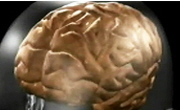(Research background and purpose) Through the improvement of computer generation (CG), visual effects (VFX), the development of production technology, and the systematization of production design, cinematic expression technology today can reproduce no...
http://chineseinput.net/에서 pinyin(병음)방식으로 중국어를 변환할 수 있습니다.
변환된 중국어를 복사하여 사용하시면 됩니다.
- 中文 을 입력하시려면 zhongwen을 입력하시고 space를누르시면됩니다.
- 北京 을 입력하시려면 beijing을 입력하시고 space를 누르시면 됩니다.

시대극에서 재현 프로덕션디자인 표현방법 연구 - 영화 <아가씨>를 중심으로 - = A Study on the Representation Method of Reproduced Production Design in the Periodic - Focus on the movie, <The Handmaiden> -
한글로보기https://www.riss.kr/link?id=A106059830
- 저자
- 발행기관
- 학술지명
- 권호사항
-
발행연도
2019
-
작성언어
Korean
-
주제어
roduction design ; Scene design ; Period drama ; Reappearance ; The handmaiden ; 프로덕션디자인 ; 무대미술 ; 시대극 ; 재현 ; 영화 아가씨
-
등재정보
KCI등재
-
자료형태
학술저널
- 발행기관 URL
-
수록면
159-172(14쪽)
-
KCI 피인용횟수
0
- DOI식별코드
- 제공처
-
0
상세조회 -
0
다운로드
부가정보
다국어 초록 (Multilingual Abstract)
(Research background and purpose) Through the improvement of computer generation (CG), visual effects (VFX), the development of production technology, and the systematization of production design, cinematic expression technology today can reproduce not only past history but also present, future, and even virtual worlds. As a result, contents of situations difficult to reproduce are expressed in movies as if they are real, leading to the expansion of the production design reproduction area. Among these new generation of movies, the movie The Handmaiden is a reproduced mise-en-scène using technical methods. Accordingly, the production design of The Handmaiden was able to produce an immersive reenactment of the time. The purpose of this research is to study the method of reproducing production design through the mise-en-scène technique. (Method) To extract the components of mise-en-scène, this research compares and analyzes prior studies, from which it derives an evaluation model. In the derived model, seven spaces of the "Kouzuki Noriaki 上月教明 Mansion" are selected and analyzed with emphasis on mise-en-scène techniques, aesthetic reproduction, and social and geographical reproductions. Based on the three reproducing elements proposed in this study, the reproduction object, the reproduction place, and the historical perception, this research will analyze correlations between production design and reproduction. (Results) As a result, five emotional effects are organically engaged. An example of this can be seen in the trait of space expansion organically leading to the effect of spectacle. Through the mode of realism and empathy, the movie enlists the audience to recall the historical situation of the Joseon Dynasty during Japanese occupation and sympathize with character personalities, situational empathy, and collective feelings. It has been confirmed that this engagement has its basis in metaphor. While the critical element of immersing into the era appears to be lacking in terms of realism, as The Handmaiden is close to fiction and takes a situational background that focuses on “reproducing situation and development” for the audience to assume background and location through character relations and development through the three stages of common background, it can be assumed that the realism of this movie may be lacking. (Conclusion) First, the three elements of aesthetic, social, and geographical reproduction were derived and applied to the production design, causing the audience to feel the five emotional effects. Second, by selecting four main characters and six spaces, the movie applied a reproduction production design program, drawing emotional effects and characteristics. Third, the said process strengthened theme within the movie through a recreation with the organic nature of the geographical, historical background (Japanese Occupation), and common background of suppression and violence-lacking-release. To sum up, we have concluded that the creation and immersion of a collective memory of a community can enhance the emotional effects of spectacle, metaphor, and realism by providing audiences with a location background and organic connections with characters.
국문 초록 (Abstract)
(연구배경 및 목적) CG, VFX, 제작기술 발달, 프로덕션디자인의 체계화 등을 통해 영화의 표현 기술은 과거의 역사뿐 아니라 현재, 미래, 가상 세계까지 재현할 수 있게 되었다. 이에 따라 재현...
(연구배경 및 목적) CG, VFX, 제작기술 발달, 프로덕션디자인의 체계화 등을 통해 영화의 표현 기술은 과거의 역사뿐 아니라 현재, 미래, 가상 세계까지 재현할 수 있게 되었다. 이에 따라 재현이 어려웠던 상황의 콘텐츠들이 사실처럼 영화 속에서 표현되었고, 프로덕션디자인 재현 범주의 확장으로 이어졌다. 그중 영화 <아가씨>는 테크니컬 기법으로 미장센(mise-en-scène)을 재현해 내었다. 이에 따라 영화 <아가씨> 재현 프로덕션디자인은 시대 재현을 몰입감 있게 연출하였다. 그러므로 미장센 기법을 통한 프로덕션디자인 재현 방법을 연구하는 것을 목적으로 한다. (연구방법) 미장센의 구성요소를 추출하기 위하여 이런 고찰과 선행연구를 비교·분석하여 구성요소를 추출한다. 이러한 요소를 활용하여 평가모형을 도출한다. 도출된 모형에 영화의 중점 공간인 「코우즈키 노리아키上月教明 저택」의 7개 공간을 선정하여 미장센 기법과 미학적 재현, 사회적·지리적 재현 방법을 중점으로 분석한다. 본 연구에서 제안한 재현요소인 재현 대상, 재현 장소, 역사적 인식, 이 세 가지 재현 요소를 기준으로 이야기의 역사적 배경, 인물 설정, 이야기 전개구조(Narrative), 연출의도를 평가·분석하며 프로덕션디자인과 재현의 상관성을 분석한다. (결과) 재현 프로덕션디자인 프로그램 대입 결과 5개의 감성효과가 유기적으로 연결되어 있으며, 한 예로 <공간확장>특성이 <스펙터클>효과로 이어지는 유기성이 나타났다. <사실감>과 <감정이입>을 통해 관객에게 학습된 일제강점기에 따른 조선의 역사적 상황을 불러일으켜 인물의 성격과 상황적 공감, 집단적 감정을 불러일으켰고, 이는 <메타포>특성이 기반을 두고 있음을 확인할 수 있었다. 시대를 느끼는 중요요소 <사실감>이 부족한 면을 보이지만, 아가씨는 시대극의 개념 중 픽션에 가까우며 시대 상황을 빌려 인물간의 관계와 공통배경 3단계를 통한 전개를 통해 시대 배경과 장소를 가늠하게 하는 ‘상황 재현 및 전개’에 초점을 맞추었기 때문에 사실감이 부족할 수 있다고 판단된다. (결론) 첫째, 미학적·사회적·지리적 재현의 3요소를 도출하고 프로덕션디자인에 대입하여 관객이 느끼는 5가지 감성효과를 도출하였다. 둘째, 주요인물 4인과 6개 공간을 선정하여 재현 프로덕션디자인 프로그램을 적용, 감성효과와 특성을 끌어냈다. 셋째, 위 과정은 인물 공통배경<억압과 폭력→결핍→해방 욕구>과 지리적, 공간적 배경(일제강점기)의 유기성으로 재창조 되어 영화 내 주제의식을 강화한다. 위 내용을 종합하였을 때, 영화의 시대 재현에 있어 관객에게 인물과 유기적 연결성을 가진 장소 배경 제공을 통해 집단 기억공동체 형성과 몰입도 그리고 <스펙터클>,<메타포>,<사실감>의 감성효과를 높일 수 있다는 결론을 내리게 되었다.
참고문헌 (Reference)
1 신보경, "한국영화미술의 프로덕션 디자인 시스템 도입에 관한 연구" 홍익대학교 영상대학원 2009
2 한소영, "서울 도시공원의 장소적 재현 연구 : 기념성, 상징성, 장소기억을 중심으로" 서울대학교 환경대학원 2009
3 김용희, "박찬욱 영화 「아가씨」의 구성과 스토리텔링 분석" 한국문예창작학회 15 (15): 161-184, 2016
5 Kim, Young Jin, "The Handmaiden Archive Book" Art Brand Open House 140-185, 2017
6 Sim, Hyung Geun, "Television Production Design" Communication Books 174-211, 2013
7 장태환, "TV 드라마 프로덕션 디자인에서 시각적 깊이의 劇的효과에 관한 연구 : 한국드라마를 중심으로" 홍익대학교 대학원 2014
8 Kil, Yun Hong, "A Study on Color of Park Chan-wook s film 〈The Handmaiden〉 Focusing on Wassily Kandinsky s Color Theory" 4-10, 2017
1 신보경, "한국영화미술의 프로덕션 디자인 시스템 도입에 관한 연구" 홍익대학교 영상대학원 2009
2 한소영, "서울 도시공원의 장소적 재현 연구 : 기념성, 상징성, 장소기억을 중심으로" 서울대학교 환경대학원 2009
3 김용희, "박찬욱 영화 「아가씨」의 구성과 스토리텔링 분석" 한국문예창작학회 15 (15): 161-184, 2016
5 Kim, Young Jin, "The Handmaiden Archive Book" Art Brand Open House 140-185, 2017
6 Sim, Hyung Geun, "Television Production Design" Communication Books 174-211, 2013
7 장태환, "TV 드라마 프로덕션 디자인에서 시각적 깊이의 劇的효과에 관한 연구 : 한국드라마를 중심으로" 홍익대학교 대학원 2014
8 Kil, Yun Hong, "A Study on Color of Park Chan-wook s film 〈The Handmaiden〉 Focusing on Wassily Kandinsky s Color Theory" 4-10, 2017
동일학술지(권/호) 다른 논문
-
공간디자인 마케팅 전략으로써 공간가치 창출에 관한 연구
- 한국공간디자인학회
- 김지현
- 2019
- KCI등재
-
랜드마크의 요소가 약속장소 지정에 미치는 영향에 대한 연구
- 한국공간디자인학회
- 강경희
- 2019
- KCI등재
-
- 한국공간디자인학회
- 황용섭
- 2019
- KCI등재
-
- 한국공간디자인학회
- 최민석
- 2019
- KCI등재
분석정보
인용정보 인용지수 설명보기
학술지 이력
| 연월일 | 이력구분 | 이력상세 | 등재구분 |
|---|---|---|---|
| 2022 | 평가예정 | 재인증평가 신청대상 (재인증) | |
| 2019-01-01 | 평가 | 등재학술지 유지 (계속평가) |  |
| 2016-01-01 | 평가 | 등재학술지 선정 (계속평가) |  |
| 2015-06-01 | 학술지명변경 | 외국어명 : Journal of the Korea Intitute of the spatial design -> Journal of Korea Intitute of Spatial Design |  |
| 2015-01-01 | 평가 | 등재후보학술지 유지 (계속평가) |  |
| 2013-01-01 | 평가 | 등재후보 1차 FAIL (등재후보1차) |  |
| 2012-01-01 | 평가 | 등재후보학술지 유지 (기타) |  |
| 2011-01-01 | 평가 | 등재후보 1차 PASS (등재후보1차) |  |
| 2009-01-01 | 평가 | 등재후보학술지 선정 (신규평가) |  |
학술지 인용정보
| 기준연도 | WOS-KCI 통합IF(2년) | KCIF(2년) | KCIF(3년) |
|---|---|---|---|
| 2016 | 0.47 | 0.47 | 0.53 |
| KCIF(4년) | KCIF(5년) | 중심성지수(3년) | 즉시성지수 |
| 0.51 | 0.52 | 0.692 | 0.28 |





 KCI
KCI KISS
KISS




